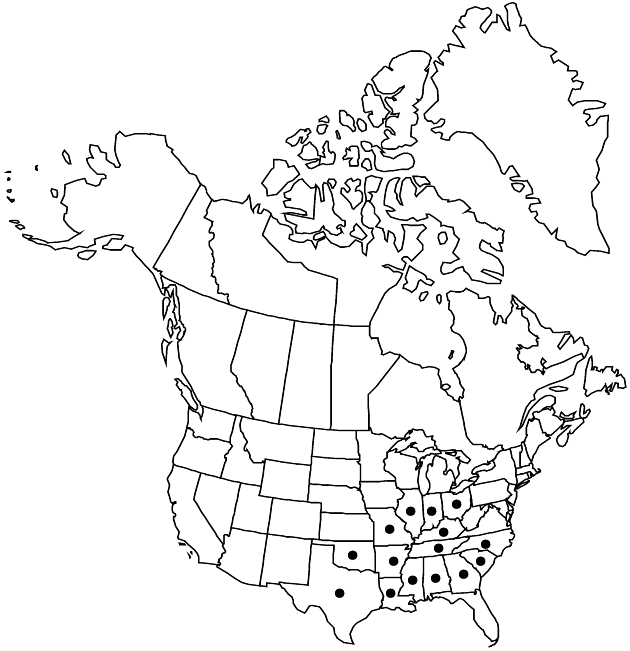Cirsium carolinianum
Rhodora 50: 229. 1948.
Biennials, 50–180 cm; taproots short with many slender, fibrous lateral roots. Stems usually single, erect, glabrous to ± tomentose, sometimes sparsely villous with septate trichomes; branches few, usually distal, ascending. Leaves: blades linear to oblanceolate or elliptic, 10–30 × 1–5 cm, unlobed and spinulose to irregularly dentate or pinnatifid, lobes narrowly to broadly triangular, sometimes coarsely toothed or lobed toward base, acuminate, main spines slender, 1–5 mm, abaxial faces gray-tomentose, adaxial glabrous or sparsely villous with septate trichomes; basal often present at flowering, petioles slender, winged, bases long-tapered; principal cauline relatively few (10–25), petiolate or distal sessile, mostly restricted to proximal 1/2 of stems, progressively reduced distally, bases tapered, not decurrent; distal cauline widely separated, linear to narrowly elliptic, reduced, becoming ± bractlike, merely spinulose to irregularly dentate or shallowly lobed. Heads (1–) 2–9 (–many), in paniculiform arrays. Peduncles slender, 1–15 cm (not overtopped by distal leaves). Involucres narrowly ovoid to campanulate, 1.2–2 × 1.2–2 cm, thinly arachnoid-ciliate. Phyllaries in 7–10 series, imbricate, green, linear to lanceolate (outer) or linear to linear-lanceolate (inner), abaxial faces with narrow, glutinous ridge; outer and middle ascending to appressed, bodies entire, apices widely spreading (at least the outer), spines ascending to spreading (at least the outer), slender, 1–4 mm; apices of inner phyllaries flat, often twisted, acuminate. Corollas pink-purple (white), 15–20 mm, tubes 5–9 mm, throats 5–7 mm (noticeably wider than tubes), lobes 4–5 mm; style tips 4 mm. Cypselae light-brown, 3–4 mm, apical collars yellowish, 0.5–1 mm; pappi 12–14 mm. 2n = 20, 22.
Phenology: Flowering spring–summer (Apr–Jul).
Habitat: Wooded areas, openings, fields, roadsides
Elevation: 50–300 m
Distribution

Ala., Ark., Ga., Ill., Ind., Ky., La., Miss., Mo., N.C., Ohio, Okla., S.C., Tenn., Tex.
Discussion
Cirsium carolinianum is widely distributed in the southeastern United States: on the Gulf coastal plain from Texas to Alabama north through the Ouachita and Ozark highlands to southeastern Missouri; in the Ohio River Valley from southernmost Illinois to southern Ohio and northern Kentucky; and in the southern Appalachians and Piedmont from Alabama and Tennessee to southern Virginia. Cirsium carolinianum, though widespread, is a taxon of conservation concern over part of its range. The replacement of open woods by dense forests brought about by fire suppression has greatly reduced available habitat.
Selected References
None.
Lower Taxa
"fine" is not a number.